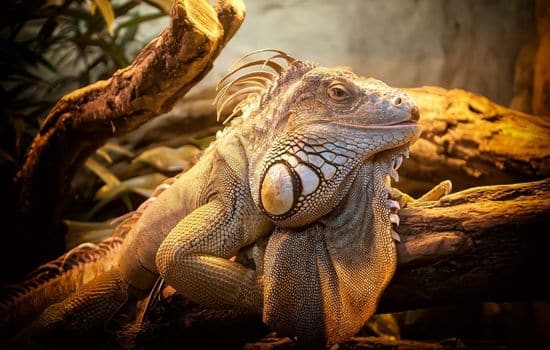Advertisements
Today we are going to learn about the enigmatic world of lizards and see how fascinating the characteristics of these animals are.
Lizards, like all reptiles, are animals that have a body covered in scales, 4 limbs and a tail.
Advertisements
They are part of the order of the Scaled Ones with the serpents.
Despite being oviparous, some are omnivores, such as the Tegu, the breed most commonly found in Brazil.
Advertisements
With a wide range of sizes: some are just a few centimeters long and others are over 1 meter long from head to tip of tail.
There are more than 3 thousand species of them, distributed in 45 families.
The best known are: chameleons, lizards and iguanas.
Habitat
Classified as cold-blooded animals, they like warm places to live. The expression "lagartear" comes from these characteristics of theirs: sunbathing.
See Also:
Many species live in dry deserts or humid tropical regions.
They live underground, on the ground or in trees and plants. And other species spend part of their time in water.
The physical characteristics
Their size and shape vary more than any other group of reptiles.
Some of them are only a few centimeters long. However, the Komodo dragon is the largest lizard of all and can reach 3 meters in length.
Most lizards have four strong legs, but some have no legs at all. This makes them look like snakes and is often mistaken for one.
However, they have eyelids and ear openings, that is, ears.
Most of them have dry scales covering their bodies. These are small, smooth or rough plates, often brown, green and gray in color.
Several lizards have unique features, such as horns or spines.
Some have a bony plate around their necks. These features help them scare their enemies into keeping their distance.
Other species have folds of additional skin on the sides of their bodies that when opened look like wings, allowing them to glide from one tree to another.
There are three species of venomous lizards:
- Gila monster: a very striking species that lives in the southwestern United States;
- The beaded lizard: from Mexico and southern Guatemala.
- Komodo Dragon: lives on the island of Komodo in Indonesia and its venom is very dangerous.
How do lizards behave?
Most are active during the day and rest at night. Lizards are nocturnal.
Different species of lizard move in different ways.
Most run using all four legs, however some run faster on their hind legs, lifting the front part of their body.
Lizards that do not have legs move like snakes.
An interesting characteristic of lizards is camouflage, which allows them to change color.
Sometimes they exchange the coloring dark and discreet for a brighter and stronger color. He does this to try to attract a mate or scare away.
Color change is a way of communicating with other lizards, it is part of their language. Light and temperature also affect color changes.
They are in search of food most of the time.
The diet consists of insects, although some eat plants and seeds, and may dig in the ground in search of food.
However, they can wait for their prey to approach, to catch it.
Most lizards run away from their enemies. However, when hunting is favorable, it is impossible to avoid one of them.
When this happens, it inflates with air and stands erect, making them look bigger and scarier.
And others use their tail to escape from their enemies, which comes off when touched, falling and writhing on the ground.
This movement distracts the enemy's attention and, in the meantime, the lizard escapes. And a new tail develops in place of the one that fell.
How do lizards reproduce?
You lizards They reproduce by laying eggs, several at a time. Other species lay only one or two eggs.
The bark is tough, resembling leather. They usually bury it or hide it under leaves.
The females of some species watch over the eggs until they hatch.
However, most lizards abandon them after laying them.
There are some types that give birth to live young instead of laying eggs.

How lizards and humans coexist
In some places in the world, people eat large lizards, such as iguanas, or, in necessary situations, even smaller species, such as lizards.
Small lizards are useful to humans because they feed on insects.
Human commercial activities have threatened the survival of some lizard species.
Cutting down trees to make room for buildings destroys the habitat of some lizards.
Another point that reduces their numbers is the capture and sale of lizards to serve as pets.
The large Komodo dragon species in Indonesia is one example, which almost became extinct. It is now protected by law.
